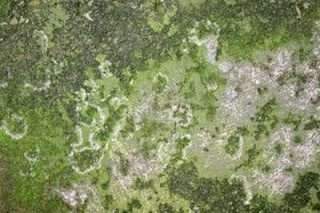The concept of green expresses the use of environmentally friendly materials in the manufacture of concrete, to make it durable for a longer period.
To produce new products, avoiding the burden of waste disposal, waste can be used,
or it can be used as additives.
Inorganic materials can also be used as green aggregates in the concrete industry,
such as stone dust, crushed concrete and marble waste.

Alternative materials used in green concrete
Fly ash
It is a very fine powder, coal pulverized combustion deposits for heat generation may contain 80% fly ash and 20% bottom ash.
Nor will the use of fly ash for concrete instead of Portland cement, only significant savings in cement and energy consumption.
But it provides economically, has several advantages, as it can be used 100% instead of Portland cement.
Fly ash is able to improve certain properties in concrete, such as durability, because it generates less heat during reaction.
Fly ash rubble
By using fly ash, many light concrete aggregates can be produced,
in addition to using the ash found at the bottom of the kiln in the concrete manufacturing process.

Stone crushing waste as fine aggregate
Quarry dust (quarries or stone crushers) is a deposit, tailings, or other non-valuable waste,
found after rocks have been extracted and processed to form fine grains.
Quarry dust appears when crushing coarse marble and it contains coarse grains,
which leads to gaining good resistance due to its strong cohesion and tightness.
Experiments have proven that quarry dust concrete is better in acid and sulfate resistance and has lower permeability, compared to ordinary concrete.
Aggregate made from recycled concrete or stone
It is a graded aggregate that is produced from clean concrete waste,
and is manufactured for use in road paving layers.
It can contain quantities of bricks.

Suitability of green concrete for buildings:
There are many factors that encourage the use of green concrete in construction, including:
1- It reduces the dead load of the building, and it also reduces the loading period on the crane due to its ease of transportation due to its light weight.
2- Good resistance to heat and fire, and sound insulation.
3- Speed of construction, and reduce the total construction period.
4- Reducing carbon dioxide emissions in the concrete industry by 30%
5- Increasing the use of waste products in the concrete industry.
6- Permanent development and there is no pollution to the environment.

Why should we immediately use green cement, block and green tiles?
It has been scientifically proven that the production of a ton of cement is accompanied by the emission of 1 ton – 2 tons of carbon dioxide.
And that 99% of this gas is formed as a result of heating limestone, cement clinker and burning fuel to heat these materials.
The higher the heating temperature of the cement clinker, the greater the carbon dioxide emission and the greater the greenhouse effect.
The environmental damage to the plant also increased and the proportion of respiratory diseases, such as asthma, lung cancer and other serious diseases, increased.
For more architectural news


 العربية
العربية
Pingback: Wooden floors types and method of installation